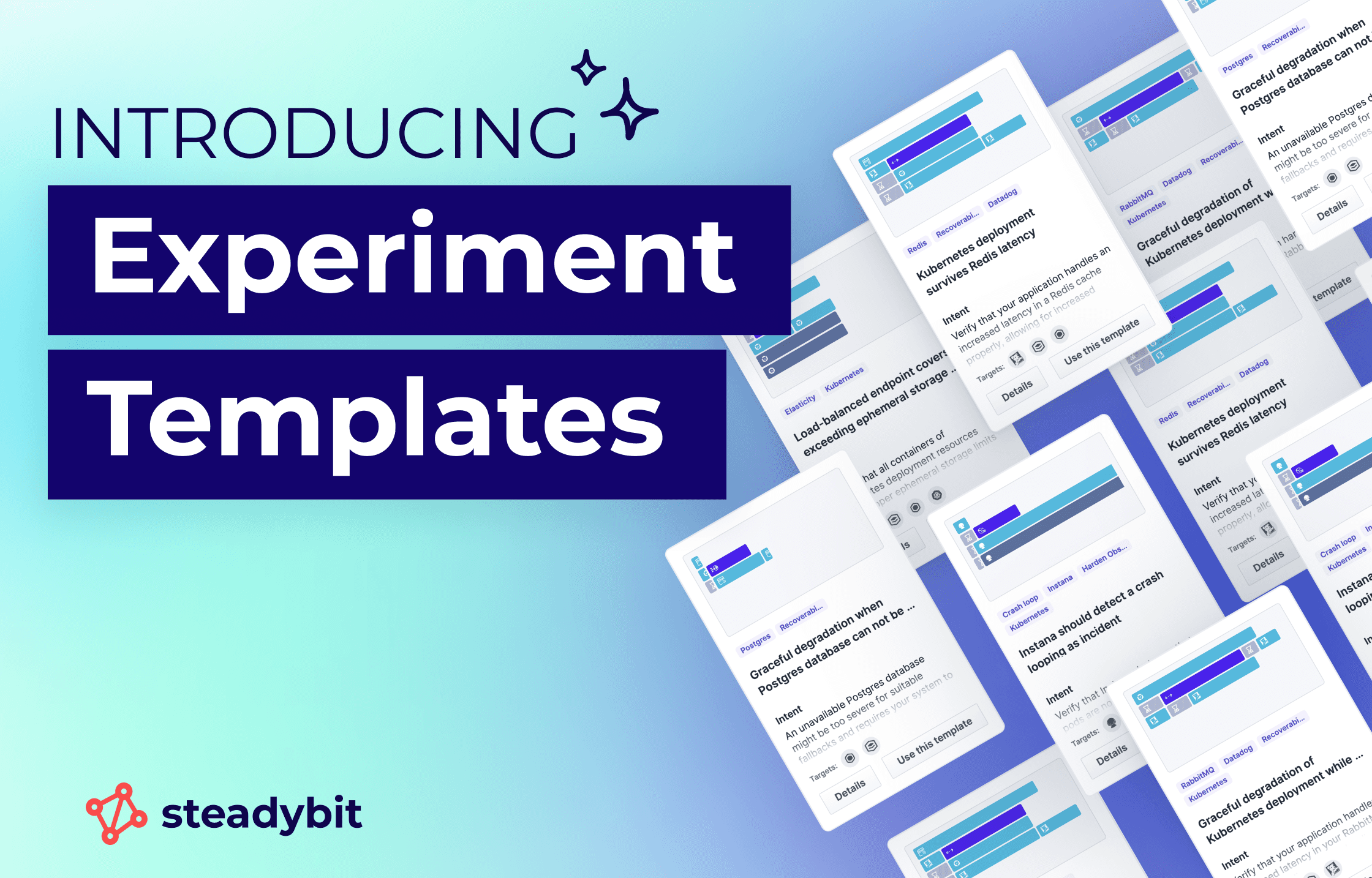Introducing Steadybit's Experiment Templates

Introducing Steadybit’s Experiment Templates, a powerful new feature designed to transform the way you approach chaos experiments. These customizable and reusable templates streamline experiment creation, allowing teams to focus on what truly matters—enhancing system reliability and efficiency.
We’re thrilled to unveil our newest feature, Experiment Templates, a game-changer in how you approach chaos experiments. This feature will revolutionize your testing processes by reducing the time to launch experiments, freeing up time to focus on what really matters—improving system reliability.
Let’s explore how Experiment Templates can make a significant impact on your teams’ efficiency and the quality not only of your tests but also your product.
What are Experiment Templates?
Experiment Templates are predefined actions combined into valuable frameworks that allow users to create and deploy chaos experiments quickly.
For instance, a simple template may consist of a single attack to increase the CPU usage within a container. But a more advanced template may consist of multiple actions, such as injecting traffic or increasing memory usage.
Regardless, you can customize the templates to provide a more elaborate starting point for testing system resilience. And you can reuse them, too, so you don’t need to start from scratch each time you wish to create a new experiment.
Features and Benefits of Using Experiment Templates
1. Accelerated Experiment Creation: Experiment Templates save valuable time by providing a ready-made structure for your tests. Users can select a template, adjust it to fit their needs, and launch an experiment in minutes. This streamlined process reduces the setup time and lets teams focus on analyzing results and improving system reliability.
2. Customization and Reusability: Each template is fully customizable. Whether you need to stress test a CPU in a Kubernetes environment or check the resilience of your microservices, you can tailor experiment templates to meet diverse testing needs. Once customized, you can save these templates for future use, enhancing the efficiency of experiment setup and increasing the consistency across tests.
3. Enhanced Collaboration: Steadybit’s integration into the Reliability Hub makes sharing templates across teams a breeze. This feature promotes knowledge sharing and best practices within teams and across the organization. It ensures that valuable insights and effective experiment strategies are accessible to everyone, boosting the overall impact of your resilience testing efforts.
4. Smooth Transition from Recipes: For those familiar with our previous feature, Recipes, transitioning to Experiment Templates is seamless. Recipes laid the groundwork by providing basic structures for experiments. Experiment Templates build on this foundation with enhanced flexibility and functionality, offering a more intuitive and powerful tool for your chaos engineering needs.
Why Should Steadybit Users Adopt Experiment Templates?
For New Users: If you’re new to chaos engineering or Steadybit, Experiment Templates provide an excellent entry point. They offer guided structures to help you understand and implement effective experiments without the steep learning curve.
For Experienced Users: Advanced users will appreciate the depth of customization and efficiency that Templates bring. The ability to fine-tune experiments and leverage shared knowledge makes it easier to tackle complex scenarios and achieve more precise outcomes.
For Teams: Experiment Templates facilitate smoother workflows in team environments. They standardize testing procedures and help new team members get up to speed with ongoing and planned experiments.
Each template is a stepping stone towards more resilient systems and is designed to make you think ahead, act efficiently, and innovate continuously. Stay tuned as we roll out more features and delve deeper into what you can achieve with Experiment Templates.